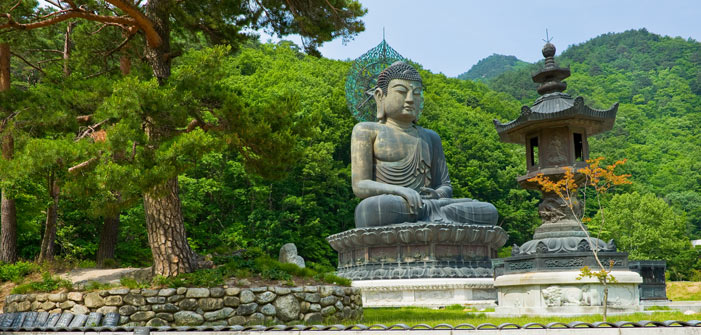Seoul attracts travellers despite its war torn history
By Carlton Leisure -
17/11/2014

Seoul, the capital of South Korea, is a destination equally popular among amateur and seasoned travellers. The city may be making herculean efforts to emerge as a megacity but it has not done away with its historic and traditional allures and perhaps it is what attracts tourists from around the world to this city. Ancient palaces, monuments and an array of traditional delicacies still lure tourists to Seoul which has taken a leap towards modernity. Here we turn spotlight on major draw cards of the city.
Gyeongbok Palace
One of the most prominent palaces in Korea Gyeongbok Palace has served as the seat of power. Its strategic location on the main boulevard in Seoul in proximity to the Blue House (the President's residence) and the U.S embassy also makes a must see attractions in the city. The palace built during 14th centuries has been destroyed and rebuilt several times. Guided tours to the palace are available that acquaints several aspects of the palace.
Bukchon Village
A stroll though the Bukchon Village acquaint you with life in Korea of ancient times. The village situated in vicinity to Gyeongbok Palace and Changdeok Palace has several hanoks traditional Korean wooden homes. The lanes are lined with cafes, art galleries and restaurants making it ideal for travellers. Bukchon falls on subway line 3 that makes it easily accessible.
War Memorial of Korea
War Memorial gives an insight into the troubled history of South Korea. The country has been attacked several times and its relation with its neighbour is not good. The museum which bills itself as a war memorial is in fact a military museum. On arrival, the guests will see tanks, planes and guns which are on display here.
Itaewon
Itaewon could be termed as the melting pot of cultures and tourists have opportunity to meet people with different nationalities. The area which has been developed as a tourism district is home to several cultural, shopping, and entertainment options. The area is full of restaurants and stores where travellers can enjoy dinner and a great shopping experience.
Insadong
Insadong is often frequented by vacationers looking to buy souvenirs. The area is filled with several souvenir shops for tourists with varying inclination. The 700 meter stretch of street remains filled with tourist during the day. Most of the travellers prefer to buy hanbok (traditional clothing), hanji (traditional paper), traditional teas, pottery, and folk crafts. Handmade accessories and jewellery are other popularly shopped items.